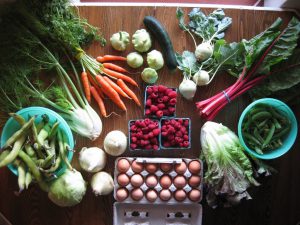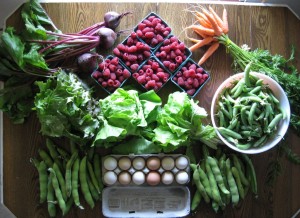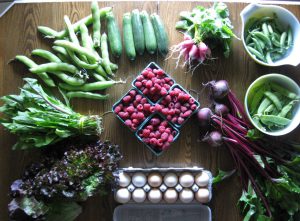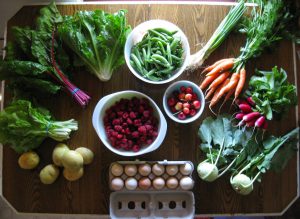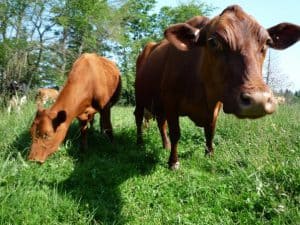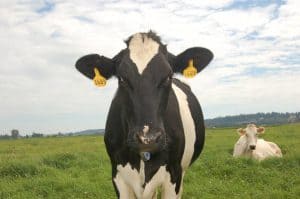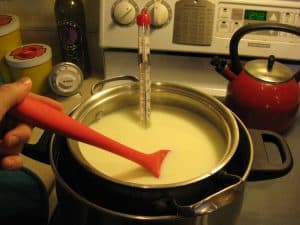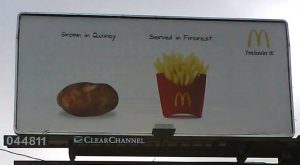 McDonalds recently launched an advertising campaign titled “From Here. For You.” across Washington State to promote itself as a vendor of local food. You may have seen the billboards, with slogans like “Picked in Yakima, Dipped in Fircrest” (for apples dipped in caramel) or “Grown in Pasco, served in Tacoma” (for fries).
McDonalds recently launched an advertising campaign titled “From Here. For You.” across Washington State to promote itself as a vendor of local food. You may have seen the billboards, with slogans like “Picked in Yakima, Dipped in Fircrest” (for apples dipped in caramel) or “Grown in Pasco, served in Tacoma” (for fries).
This is brilliant advertising. I applaud McDonald’s sensitivity to trends in the local food culture, and their ability to morph their image so astutely in order to challenge their current status in some groups as a nutritional pariah. Whoever McDonald’s paid to come up with this advertising campaign is a genius.
That is the first part of what is suspect about this campaign, though. It is so sleek, so seemingly simple, and such great advertising, that McDonald’s must have paid a pretty penny for it. My local CSA’s advertising attempts extend to weekly flyers printed up with recipes applicable to this season’s share. CSA food is silent food. McDonalds, however, has to pay for many billboards (on freeways and online) in order to promote an attitude that comes so naturally to those who grow to love local food for the sheer sake of it.
Even if what McDonald’s ads claim is true and they do source the actual fries you eat in Tacoma from potatoes in Richland (which I have neither the time nor resources verify), the food that they grow in Washington’s rural counties is still bad food. McDonalds may want to take advantage of how hip the localvore movement is, but here are reasons why their food doesn’t even compare:
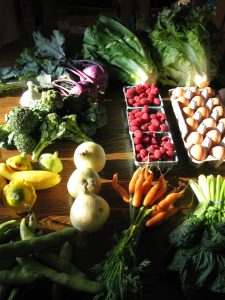 McDonald’s is Industrial. Their potatoes and apples are inevitably grown with fertilizers and pesticides that are heavy on chemicals. McDonalds invariably chooses varieties of plants that will withstand the farming practices they choose and the transportation that inevitably is required.
McDonald’s is Industrial. Their potatoes and apples are inevitably grown with fertilizers and pesticides that are heavy on chemicals. McDonalds invariably chooses varieties of plants that will withstand the farming practices they choose and the transportation that inevitably is required.
Terry’s Berries is an organic farm, and the veggies grown are treated gently. The food does not have to withstand processing and long travel; it gets picked, I take it hone and eat it. The food at my CSA is personal from the time it is planted to the time it is tasted.
McDonalds Only Tastes Salty and Sweet. McDonalds doesn’t serve food in a way that promotes its flavor. Their food is a canvas upon which to paint the flavor you experience, using salt, fat and sugar (actually…with High Fructose Corn Syrup). When you eat McDonalds fries, you don’t taste a unique potato or a fresh potato or a local potato. You taste a generic potato that has been processed in a factory, slavered with McDonald’s special fry flavor, and frozen until it is cooked in grease at your local fast food franchise. Even their apples are meant to be eaten slathered in sweet caramel sauce.
Real food tastes like itself, and it tastes great. You don’t need to drown CSA potatoes in salt to make them edible; it would be a crime to smother the natural sweetness of a CSA apple with a sugary dip. My CSA food is original, unique, and it always changes. It’s important to keep variety strong in the plant world as well as in your diet. The fascination with heirloom varieties in recent years came as a push towards foods that had unique and wildly fascinating flavors.
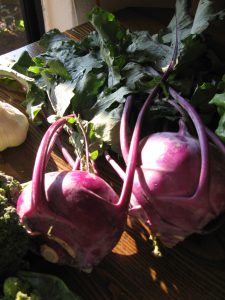 McDonalds Doesn’t Feed, It Fattens. The salty, fatty, sweet meals at McDonalds have little nutritional value, so even when you gorge yourself with a quarter pounder, large fries and a coke, you can still come away feeling unsatisfied. McDonalds is good at creating food addiction. I state this from experience. Before I knew better, I used to love McDonalds. Hands down loved it. But, I remember how I could feel hungry even after two cheeseburgers, fries, a soda refill and an ice cream. The food at McDonalds is more like non-food. It looks like food. It smells appealing. It tastes great at first. But, it doesn’t actually give your body what you need.
McDonalds Doesn’t Feed, It Fattens. The salty, fatty, sweet meals at McDonalds have little nutritional value, so even when you gorge yourself with a quarter pounder, large fries and a coke, you can still come away feeling unsatisfied. McDonalds is good at creating food addiction. I state this from experience. Before I knew better, I used to love McDonalds. Hands down loved it. But, I remember how I could feel hungry even after two cheeseburgers, fries, a soda refill and an ice cream. The food at McDonalds is more like non-food. It looks like food. It smells appealing. It tastes great at first. But, it doesn’t actually give your body what you need.
There are more nutrients in a CSA weekly share than you can squeeze into a multivitamin. When we eat our local farm food, we have energy. The food is raw, so the nutrients have not had a chance to be “processed out,” which is what happens with McDonalds food. We get full, because our food is full of fiber, a complex component that it takes our bodies awhile to break down. McDonalds foods are made mostly of simple compounds that are quickly processed, leaving you wanting more.
What About the Beef? McDonalds conveniently left their beef off of this advertisement. Sure, sure, they included milk. But who drinks milk at a fast food joint? Do you know anyone who does?
One of the worst parts about McDonald’s food production is their feedlots. The cows are fed horrible diets and live under awful conditions. The cows are diseased. The workers that slaughter the animals are also treated terribly. McDonalds chickens aren’t treated much better: they are raised in crowded conditions, often never seeing the light of day; the tips of their beaks are clipped to keep them from pecking at each other; and they are bred to be so abnormally fat that they can’t even walk under their own eight.
Terry’s Berries doesn’t sell meat, but there are local farms that do.* You can treat your animals humanely and still make a living on them. McDonalds exploits the lives of their animals and the quality of their food to make cheap, empty calories that lead to obesity in many Americans. Of course McDonalds want to have the image of a local company that connects rural Washington growers with hungry people in the Puget Sound. It is a plastic image, though: unnatural, insubstantial, and one that entirely misses the point.
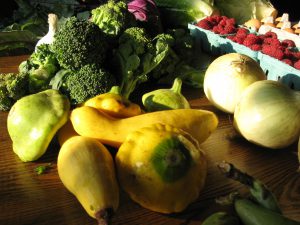 What it Means to be a True Localvore:
What it Means to be a True Localvore:
(1) Eat in season.
(2) Recognize that truly expensive items, like grass-fed beef, are meant to be specialties in your diet, not staples.
(3) Your food is not only grown locally, it also doesn’t travel cross country to be processed before ending up on your table
(4) Your food is grown in such a way to promote the local economy and the welfare of everyone involved in the food-production process (this includes friendly pest control methods as well as good treatment of employees)
Dear farmers out there, let your actions speak for themselves. When you’re doing food right, you don’t need an advertising agency to make you look good. Your customers will end up loving you so much, they’ll see you for what you really are and appreciate you for it. And, sometimes, they might even start blog projects in order to rant and rave on your behalf!
*A Few Local Sources of Good Meat:
– Sea Breeze Farm and La Boucherie shop, on Vashon Island
– Cheryl the Pig Lady, in Tacoma (cherylthepiglady@hotmail.com or 253-535-6322)
– Gradwohl’s Farm Beef, in Covington
– Meadowwood Farm, in Enumclaw; we buy our raw milk here, and they also sell some meat
(Contact the vendors directly about which farmers markets they attend.)
For more information on fast food, check out Chew on This by Eric Schlosser & Charles Wilson, the documentary King Corn, or the dramatization of the industry in the film Fast Food Nation . Another good book to read about food in America is In Defence of Food by Michael Pollan.
 WEEK 5
WEEK 5
(Bottom Left, Going Up)
Tokio Bekana
Tat Soi
Carrots
3 Onions
(Top Row, Left To Right)
Fava Beans
Summer Squash
Broccoli (Woo Hoo!)
Garlic Bulb
Purple Kohlrabi
(Right Side)
2 Huge Lettuce Heads
(Center)
3 Cups Of Raspberries
Eggs (again, the farm has new hens, and they are laying smaller eggs this week, so we received 18 eggs instead of the normal dozen)
(The food from the farm was so beautiful this week, and my rant about McDonalds so long, that I decided to pepper the post with extra photos of the veggies from the farm. Hope you enjoyed them!)
By ekwetzel
2010-08-06


